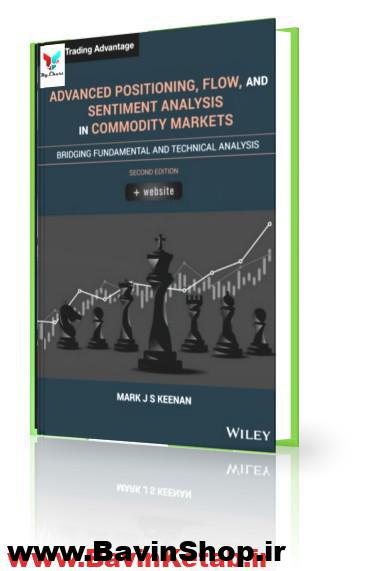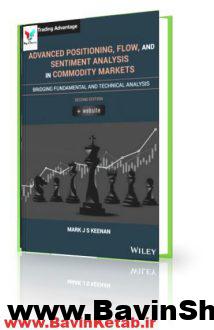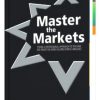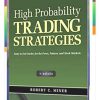- سبدخرید خالی است.
- ادامه خرید
معامله گری پیشرفته با تحلیل جریان و احساسات

معامله گری پیشرفته با تحلیل جریان و احساسات
دانلود رایگان کتاب معامله گری پیشرفته با تحلیل جریان و احساسات دربازارهای کالا: تجزیه و تحلیل بنیادی و تکنیکال
|

|
نام: | معامله گری پیشرفته با تحلیل جریان و احساسات |
| عنوان اصلی |
Advanced Positioning, Flow, and Sentiment Analysis in Commodity Markets: Bridging Fundamental and Technical Analysis |
|
| نویسنده | Mark J. S. Keenan | |
| ناشر: | Wiley | |
| سال انتشار | ۲۰۲۰ | |
| زبان | اصلی | |
| تعداد صفحات: | ۲۸۱ | |
| دریافت فایل: | ||
معامله گری پیشرفته با تحلیل جریان و احساسات
TABLE OF CONTENTS
About the Author xi
Acknowledgements xiii
Preface xv
About the Companion Website xvii
Introduction 1
Chapter 1 Advanced Positioning, Flow, and Sentiment Analysis in Commodity Markets 7
۱٫۱ Positioning Analysis – What is It? 8
۱٫۲ The History of Positioning Data, the COT Report, and the Agencies that Provide the Data 10
۱٫۳ Misunderstandings and Issues in Positioning Analysis 10
۱٫۴ Futures and Options Data 17
Chapter 2 The Structure of the Positioning Data 19
۲٫۱ The Structure of Positioning Data 20
۲٫۲ Positioning Data for the London Metal Exchange (LME) – The MiFID Classifications 28
۲٫۳ Other Types of Positioning and Flow Data 33
۲٫۴ The Structure of Commodity Markets 34
Chapter 3 Performance Attribution – An Insight into Sentiment and Behavioural Analysis? 45
۳٫۱ The Proliferation of Speculative Positioning Data 46
۳٫۲ Why is Positioning Data Interesting 47
۳٫۳ Measuring the Skill or Performance of MMs 48
۳٫۴ Net Futures Positioning vs Net Trader Number Positioning or Alignment 55
Chapter 4 Concentration, Clustering, and Position Size – Price Risks and Behavioural Patterns 59
۴٫۱ Concentration, Clustering, and Position Size 60
۴٫۲ Concentration, Clustering, Position Size, and Their Relationship to Price Over Time 62
Chapter 5 ‘Dry Powder (DP)’ Analysis – An Alternative Way to Visualise Positioning 71
۵٫۱ Dry Powder (DP) Analysis 72
۵٫۲ DP Indicator Variations 75
۵٫۳ DP Indicators and Trading Signals 82
Chapter 6 Advanced DP Analysis – Deeper Insights and More Variables 87
۶٫۱ Advanced DP Indicator Charts 88
۶٫۲ DP Indicators, Price, and Curve Structure 96
۶٫۳ DP Hedging Indicators 99
۶٫۴ DP Factor, Fundamental, and Currency Indicators 101
Chapter 7 Decomposing Trading Flow and Quantifying Position Dynamics 111
۷٫۱ Decomposing Net Positioning – The Methodology 112
۷٫۲ Decomposing Long and Short Positioning – The Methodology 115
۷٫۳ Who Has Been Driving Prices? 116
۷٫۴ Who is Trading with Whom? 118
۷٫۵ The Impact on Prices 122
۷٫۶ Speed of Positioning Changes 124
Chapter 8 Overbought/Oversold (OBOS) Analysis – The Intersection of Extremes 127
۸٫۱ The Overbought/Oversold (OBOS) Philosophy 128
۸٫۲ Constructing the Framework 128
۸٫۳ The OBOS Concentration Indicator 132
۸٫۴ Key Attributes of the OBOS Approach 133
۸٫۵ Behavioural Patterns within the Boxes 134
۸٫۶ OBOS Variations 138
۸٫۷ The DP/OBOS Hybrid Indicator 141
Chapter 9 Advanced OBOS Analysis – Extremes in Sentiment and Risk 147
۹٫۱ The OBOS Framework – Clustering and Position Sizes 147
۹٫۲ OBOS Factor Indicators 155
۹٫۳ Commodity Risk Premia – Positioning Analysis and Risk Management 159
Chapter 10 Sentiment Analysis – Sentiment Indices and Positioning Mismatches 163
۱۰٫۱ The Difference between Trader Numbers and Open Interest 164
۱۰٫۲ Trader Sentiment (TS) Indices 166
۱۰٫۳ Mismatches in Positioning and Price Inflexion Points 172
Chapter 11 Newsflow in Positioning Analysis 177
۱۱٫۱ Newsflow Data in Commodity Markets 178
۱۱٫۲ Building Basic Newsflow Indices 181
۱۱٫۳ Combining Newsflow with Positioning 186
۱۱٫۴ Economic Policy Uncertainty 190
Chapter 12 Flow Analysis – The ‘Flow Cube’ and the ‘Build Ratio’ in Commodity Markets 191
۱۲٫۱ The Flow Cube 192
۱۲٫۲ The Flow Cube down the Forward Curve 198
۱۲٫۳ The LBMA-i Trade Data 202
Chapter 13 Chinese Commodity Markets – Analysing Flow 203
۱۳٫۱ The Chinese Commodity Exchanges 203
۱۳٫۲ The Size of the Chinese Commodity Exchanges 205
۱۳٫۳ Speculative vs Hedging Activity in Chinese Commodities 208
۱۳٫۴ The Flow Cube and Build Ratio in Chinese Commodities 210
۱۳٫۵ The OBOS Framework and the Speculation Ratio 212
Chapter 14 Machine Learning – A Machine’s Perspective on Positioning 215
۱۴٫۱ Introduction to Machine Learning (ML) 216
۱۴٫۲ Decision Trees 217
۱۴٫۳ Feature Importance 227
۱۴٫۴ Random Forests 229
۱۴٫۵ Using ML to Trade 232
Appendix 1 History of the COT Report 235
Appendix 2 The COT Reports 237
Index 249




